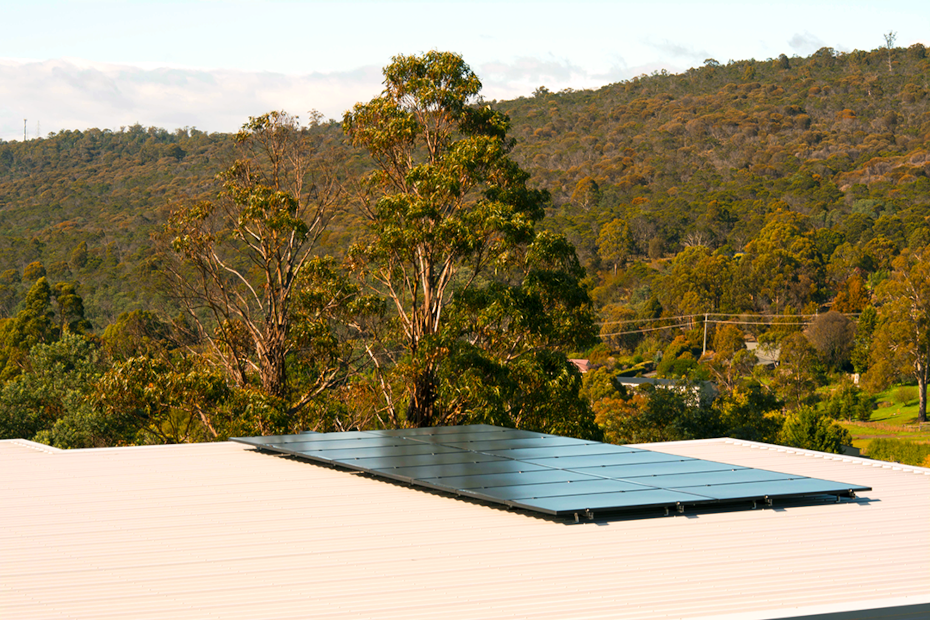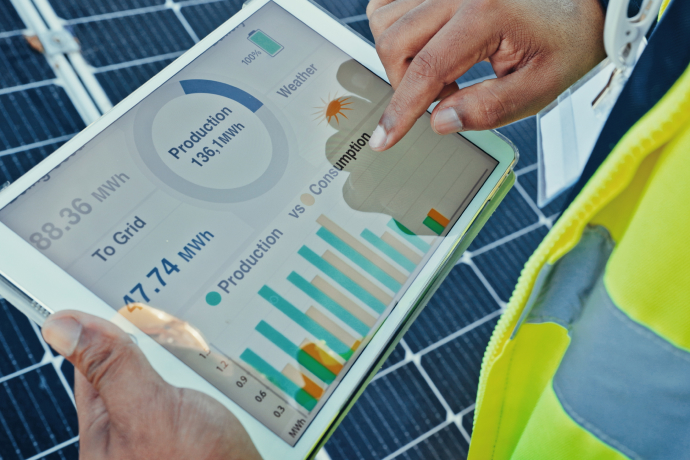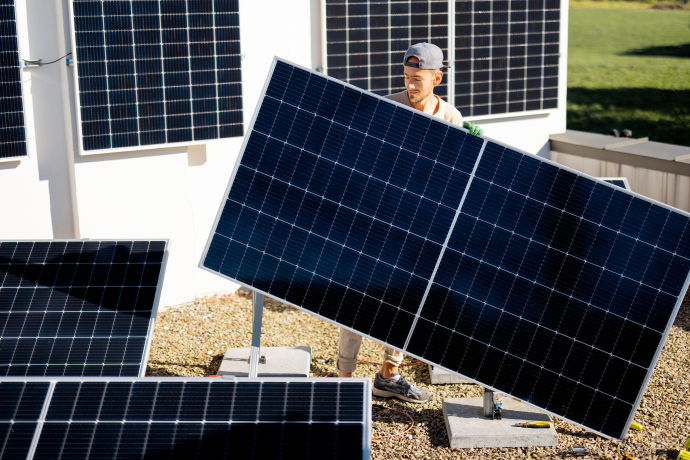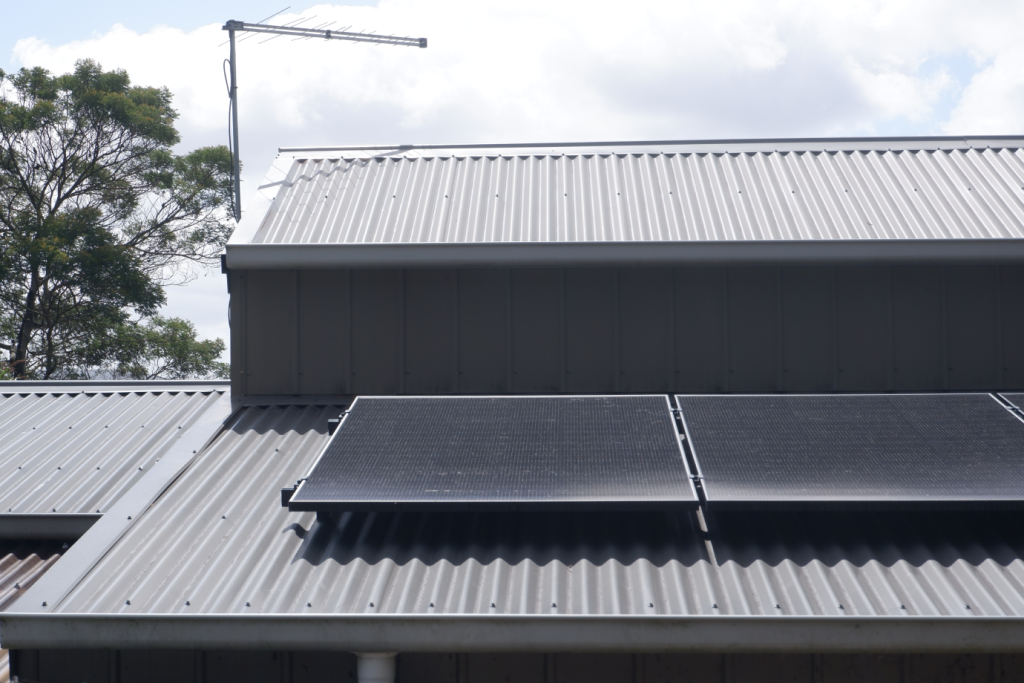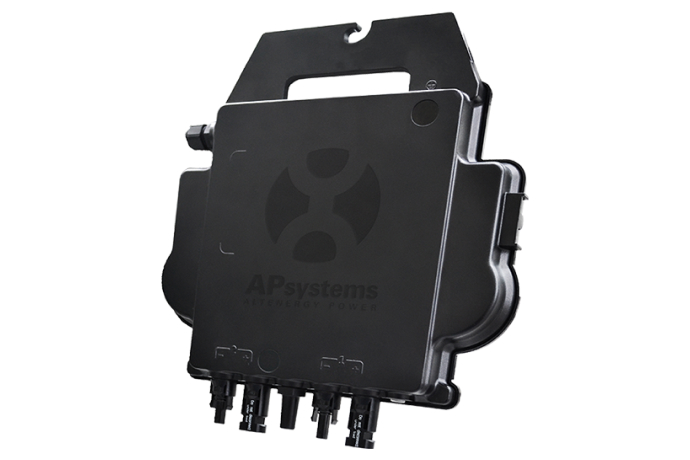Anybody who still believes solar power is just a passing fad, might want to take another look. As of 2020, there’s a staggering 2.4 million domestic solar systems powering Australian homes. And this number is rising. Fast.
That’s 21 percent of Aussies choosing the sun to power their toasters, hair dryers and dishwashers…not to mention electricity-hungry air conditioners. These numbers clearly indicate that Australians have found significant advantages to running solar power in their homes.
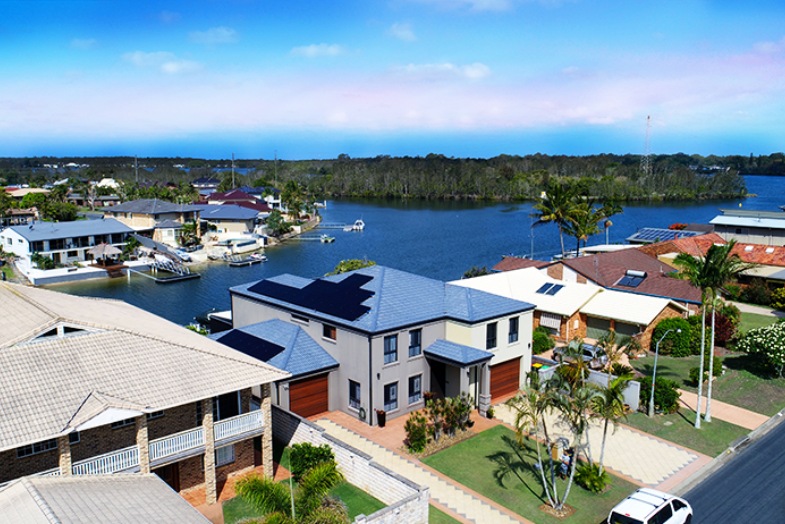
Advantages
- Saves You Money & Reduces Your Power Bills
- Government Subsidies
- Reduce CO2 Emissions
- 100% Clean Energy
- Increases Home Value
- Electricity Independence
- Make The Most Of Advanced Technologies
Disadvantages
- Up-Front Cost
- Government Policies Change And Vary
- Panel Manufacturing Is Linked To Pollution
- Can Look Ugly
- Return On Investment Takes Time
- Weather Dependent
- Finer Details Can Become Quite Technical
The list above presents a concise insight into the core advantages and disadvantages of solar. This is not meant to be an in-depth view as domestic solar is a huge topic with much to discuss.
The obvious and most compelling advantage is the potential to save a lot of money on electricity. In many cases, savvy solar citizens are wiping out their power bills completely.
Of course, there are the environmental benefits solar delivers. One hundred percent clean, renewable solar power reduces our carbon footprint.
Solar allows us to set and forget, letting the system do its thing – much the way you do now. You’ll save by doing nothing at all.
That’s the three advantages of solar that everyone has heard time and time again. However, there’s a long list of advantages for solar that many Australian households haven’t considered.
At the same time, just like any consumer product, there are potential and perceived disadvantages to solar as well.
As the title of this article has caught your eye, we’re going to assume that you’re yet to take the solar plunge. For this reason, we’ll steer clear of solar jargon and focus on what matters. How it effects you and your financials.
A Solar System Will Save You Money & Reduce Your Bills
Advantage.
A solar system can and will save you money; provided it has been installed correctly and is using SAA approved equipment. The amount you can save varies significantly based on where you live, the size of your solar system and your lifestyle.
For example, a small household with a small solar system and an already low quarterly bill might save a few hundred dollars per year. A large family with a big system can save thousands.
A standard 3-kilowatt solar system can save a small household more than 40 thousand dollars over the warranted lifespan of the system, which is usually 20 years. Now that’s big money. And depending on your circumstances and location, you might be in line for the same or even more savings.
Learning how much you can save requires an understanding of your electricity usage as well as how your potential solar system can work to specifically benefit your house and its location.
There are plenty of solar calculators online that provide pretty accurate insights with the right inputs.
Your solar provider is an expert in this area and can advise you about how much money you will likely save well before you purchase a system.
The bottom line is that with the right system you will save on your electricity costs. In many cases, the amounts can be quite substantial over time.
There’s An Up-Front Cost For A Rooftop Solar System
Disadvantage.
Sad as it is, we need to pay for things up front. Unless you’re looking at getting a financing option, solar is no different. However, solar is not like your car which depreciates by 20% the moment you drive it off the lot.
Over time, your solar system will literally pay for itself. Moreover, this outlay will eventually become the equivalent of a pretty tidy income. In this way, solar is a very guaranteed investment.
The cost of an average 3-kilowatt system, a common size in Australia, starts at around $4000. This price includes installation. They’re available for less but we’d advise against the cheapest system for reasons of quality.
Of course, you can spend much more. For example, systems that allow larger homes to survive completely off the electricity grid can start at $16,000 and upwards.
We recommend looking at solar as an investment. Something that pays itself back over time, then moves into providing a profit. So, when considering solar, ensure you speak to an expert solar consultant about the return on investment (ROI), get all the numbers necessary and run the calculation yourself.
Our Government Subsidises The Purchase Of Your Solar System
Advantage.
You may have heard about solar rebates. Put simply, it’s the government placing a subsidy on solar installations making them far cheaper for you to purchase.
There are also special subsidies for pensioners and low-income earners making solar more affordable for far more consumers.
An example of a solar rebate is that a $6000 6-kilowatt system might only end up costing you $3000 after the rebate.
There are other incentives such as feed-in tariffs which actually pay you to return your unused electricity to the grid for others to use. This would warrant its own article, so we’ll go into deeper detail in another article later down the line.
Governments And Their Policies Change And Vary
Disadvantage.
The rebates will eventually go. The government subsidy was established to ensure the solar industry got off the ground. Now the solar industry is strong in Australia and surviving on its own merit.
So, the government is slowly reducing the value of the subsidy which will eventually be removed all together. This is a big incentive to act as soon as you can an install solar in order to take advantage of the rebate.
Government solar policy can vary from state to state. Ensure you chat to an expert about which policy is state and federal and what it all means. It’s worth taking advantage of everything available to you while you can.
A good solar provider is well versed in all of this detail and will inform you. Ultimately, all the calculations are done before you purchase, so there’s little to concern yourself about.
Solar Citizens Can Reduce Co2 Emissions Their Carbon Footprint
Advantage
We are all well aware of the issues of global warming and the demand to reduce our carbon footprint. There are many solar citizens who choose solar purely because it allows them to reduce their carbon footprint.
On average, Australian households generate 18 tonnes of greenhouse gasses per annum. It is estimated that a family with a 5-kilowatt solar system could save over 8000 tonnes of greenhouse gasses per year.
At over 40% carbon savings per household, one can imagine the collective environmental benefits from a growing solar community. It’s a great thing to be a part of.
Solar Panel Manufacturing Is Linked To Pollution
Disadvantage.
The manufacture of solar cells involves the mining of rare earth materials and exotic materials. There is also a heavy carbon output from the processing of silicone, a core ingredient of solar cells. Data can suggest that this can potentially reduce the environmental benefits of solar.
Concerned solar citizens should note that while this is true, there are significant variables which need to be taken into account.
For example; those countries with poor environmental controls and standards skew the data in a negative way, as they only consider the demand of their cheaper product.
While a large number of companies do their best to mitigate the high energy demands of solar cell manufacturing, they can only move depending on demand and how quickly the market grows.
Low energy input solar manufacture is certainly possible. Indeed, research is already advancing rapidly. The issue is that costs are currently prohibitive and will not reduce until the solar market grows, therefore reducing prices.
Secondly, solar manufacturing is yet to benefit from recycling due to operational costs. Time and economies of scale will see this challenge met.
A recent film by US film maker Michael Moore has been extremely critical of the renewable industry of which solar is a leading player. His observations have troubled the solar industry.
Moore’s talking points have caused great controversy, so we’ll be sure to address his criticisms in an article at a later date.
Ultimately, the domestic solar industry, while having found its feet and secured its market, is still relatively young. The energy intense manufacturing issues solar faces now will go the way of coal generation as the technology improves and economies of scale eventually reduce costs.
Solar Power Is 100% Clean Energy
Advantage.
There’s an environmental cost to nearly everything we do at home. Watching TV, making your toast, having a shower, etc. all produces greenhouse gasses. If it’s electrical and switched on, there’s carbon going into the atmosphere.
When we take our power directly from the sun, using our home electrical devices has no carbon impact. It’s 100 percent clean energy. Simple as that.
Some Think Solar Panels Can Look Ugly
Disadvantage.
While beauty is in the eye of the beholder, very opinion-based disadvantage. On a rooftop, some solar panels can detract from the sleek lines of your lovely designer home. In some cases, the visual impact is unavoidable. However, there are options that allow you to minimise and drastically improve the visual impact.
There are solar panel designs that are actually built to be far more cosmetically appealing, like black slim line solar panels. Something to consider if visual appeal is important to you.
Talk to your solar provider. If you want to opt for something efficient and visually appealing, make sure you communicate that from the outset. It can be an important considering when designing your system. If your home presents options for installing unobtrusive solar power, your installer will be able to identify them. Additionally, when conditions allow, panels could be installed on a portion of the roof not visible in the street scape.
It’s possible your array could be installed on the garage roof. It’s even possible to install your solar array on the ground. Keep in mind, a ground level installation requires plenty of space and presents its own challenges.
A Good Solar System Increases The Value Of Your Home
Advantage.
More homes are being sold with existing solar panels. There is now enough data to indicate that prospective home buyers place significant value in a home with an existing system.
It appears that value is relative to the size of the system, with larger arrays adding more value to a property.
A study in 2015 suggested that a solar system can provide a 3-4% increase to your overall home value. Not including the intrinsic value and investment of the system, itself. As with the rest of the world, there has been more than a number of advancements in solar technology since 2015.
A 5-kilowatt system could add as much as 30 thousand dollars to the value of your home. That’s not bad considering you probably installed it for not much more than $5000.
Return On Investment With Solar Power Takes A Long Time
Disadvantage.
Different people have different ideas as to the true meaning of short, medium, and long term.
Your solar system will eventually pay for itself, but it certainly won’t happen overnight. For that matter, you won’t see a net return in the first year or two either. If you’re on a financing deal, it is very possible to spend less on the solar repayments than your previous power bill. So you can go cash positive overnight, but your overall return on investment will still take time.
There are many variables that impact this equation. Your circumstances will be unique so any mention of time frame would only be loosely speculative.
Here’s some averages to provide an indication. A modest 5-kilowatt system will take up to 5 years until it’s payed for itself. A large 20-kilowatt system will take up to 7 years.
One could argue that even at 7 years, this is a reasonably short period of time to break even on an investment. Most other investments; whether stocks, property or otherwise, can take much longer than that, and are very rarely a guarantee like solar is.
When also considering the warranty period, supporting the integrity and performance of the equipment, systems can be performing for 30+ years.
A Solar System Can Give You Electricity Independence
Advantage.
In Australia, energy policy, or the lack thereof, has been a problem for Aussie electricity consumers. Between the government and the private sector, consumers have had to suffer the confusion of a lack of national power direction.
The result that we’ve all have had to bare is higher prices and a confusing power retail sector. A solar array that covers your electricity demands puts power in your hands.
For those with a battery connected to their system, the inconvenience of blackouts can become a thing of the past, whatever time of day the power goes down.
Solar Power Is Dependent On The Weather
Disadvantage.
The power doesn’t flow when the sun doesn’t shine. During the evening, your solar panels are sleeping, just like you. Solar panels need the sun to function, so while night produces no power, cloudy days will also reduce the output of your solar panels.
However, some panels are better in overcast and shading than others are. If efficiency in those times is important for your return on investment, there are options. Read more on our microinverters vs. string inverters article.
Most importantly, Australia doesn’t really suffer this issue much. A lot of systems are manufactured for worldwide use. There are places where this disadvantage really needs a strategy for an effective work around. However, Australia, blessed as it is with lots of sun, the weather issue is not a big one.
If you really want to maximise the time you do have available, there is also technology to the rescue in the form of lithium batteries. With a battery included in your system, excess power is stored in your battery for use in the evenings and cloudy days.
Many Aussie solar citizens have taken up the battery inclusion and are enjoying brand new levels of electricity independence.
Solar batteries are a pretty big subject and deserving of an article all to itself. Stay tuned for that one.
Solar Keeps You And Your Home Technologically Current
Advantage.
While coal and gas will remain for quite some time yet, it’s very old technology. Modern methods of powering our homes will soon leave this old school tech behind.
In the not too distant future, it will likely be seen as odd that your home is not run on solar. In the not too distant future, building codes may demand it on new dwellings.
As the uptake of solar reaches a majority of homes, it will become the norm. Our grid and new technologies will in turn adapt to this.
Going solar now ensures you remain current; it ensures your home remains current. While solar technologies will no doubt improve, you’ll already be set-up to take advantages of the new tech and upgrade cost effectively.
Solar Power Is Lingo Heavy And Quite Technical
Disadvantage.
When you embrace the world of solar, you’re going to come into contact with a brand new library of lingo and terms. Words like rebate, feed-in tariff, kilowatt hour, solar array, DC converter, grid and more.
Don’t let them scare you. Remember your first mobile phone? Remember when the words data and search engine were never parts of your regular language?
While some can find the new language a bit of a challenge, the learning curve for solar is relatively gentle.
This is a disadvantage you can quickly turn into an advantage you can be proud of with a little reading. Hopefully we’ll be able to help where we can.
Conclusion
We’ll let you decide that for yourself
As we’ve discussed, solar is not without its disadvantages, we want to be as honest and upfront with that as possible. However, when we look closely at the disadvantages, we can see that they’re all easily overcome.
For many prospective solar clients, they’re already sold on saving money and doing their bit to save the planet. It’s when people see the long list of added advantages that they truly come to embrace solar.
Yes, free power is brilliant, but paying upfront can cause pause (assuming you don’t get green loan financing, which you should likely consider). However, you know you’ll get that back in a few years and have something that will guarantee a return for the next 30+ years.
It’s a challenge to learn a whole new technology, yes. But being current and keeping your home current, ensures you are staying in pace of the ever-changing technologies that influence our day to day lives.
Solar will definitely be a part of your future. We think there are great advantages to making it a part of your now.

